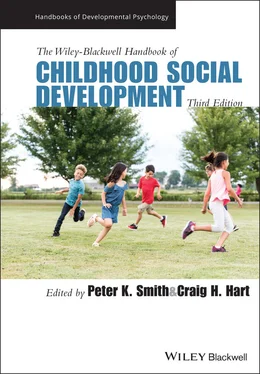This replacement was prompted by a text, “ Race et histoire ”, written in 1950 by the cultural anthropologist Claude Lévi‐Strauss (1908–2009), upon the request of UNESCO (Lévi‐Strauss, 1951/1987). First, Lévi‐Strauss states that the term race has zero scientific value. Differences between human groups stem from “geographical, historical and social circumstances,” not from “anatomical or physiological conditions.” Second, he tells us to resist value hierarchy. “The many shapes adopted by mankind in time and space cannot be categorised in an order of increasing perfection: they are no beacons lighting the road to triumph, no stages on the way to the highest form of civilisation: Western” (based on the translation by Finkielkraut, 1988, p. 56). This is the very temptation the enlightened philosophers succumbed to: placing human communities on a scale of values, occupying the highest level themselves. This repugnant conviction laid the foundations for colonialism, and formed the basis of the closely connected 19th‐century ethnological science. However, when ethnologists discovered the complexity of traditions and modes of living in so‐called primitive societies, they did not take part in it anymore, as Lévi‐Strauss made clear. Ethnology became cultural anthropology and the general enlightened notion of man was replaced by a non‐hierarchical diversity of culturally specific characters (Finkielkraut, 1988, p. 65). This, however, is at least partly referring back to the idea of the Volksgeist . That is the core of Finkielkraut’s critical analysis.
The essence of Finkielkraut’s essay is that it makes clear that Lévi‐Strauss strikes out at hierarchizing so strongly, that in doing so he also abolishes the universality of Enlightenment thinking. That is to say: if one replaces the universal subject of man by concrete, living, and culturally differing groups, then one replaces the universality of the original declaration of the French revolution by Herder‐like thinking in terms of the Volksgeist . And Lévi‐Strauss has gathered a following. Following structural anthropology, all life sciences have opened the hunt for ethnocentrism, leading to what Finkielkraut dramatizingly calls “the second death of mankind” (the first being that of Romanticism) (Finkielkraut, 1988, p. 59). Contemporary fanatics of cultural identity have continued to glorify the collective soul, a glorification stemming from the term Volksgeist and culminating in racial theory and Hitlerism (Finkielkraut, 1988, pp. 76‐79). And, I am inclined to add, in the current multicultural debate in The Netherlands and many other European countries, which has taken the form of anti‐Muslim activism.
Child Development in Enlightenment and Romanticism
The described course of history from Herder to Lévi‐Strauss is also applicable to thinking about children. The developmental psychologist Kessen made clear that the modern child and the mere concept of child development to a large extent are cultural constructions. Developmental psychology itself can be characterized as “a peculiar invention that moves with the tidal sweeps of the larger culture” (Kessen, 1979, 1993, p. 227).
Enlightenment and its notion of progress (Rousseau) are explicitly based on the assumption that the child itself, through natural education and development, would work its way to the highest level: that of adult Western cultural man. Rousseau’s adoration of the “noble savage” (Rousseau, 1755, 1762) formed the basis for a hierarchical organization of peoples and of child‐development stages. Piaget endorsed this line of thinking. This is illustrated by the influence exerted on him by the cultural anthropologist he frequently quoted, Lucien Lévy‐Bruhl (1857–1939), who wrote classic works on “ les sociétés inférieures ” (Lévy‐Bruhl, 1910) and on “ La Mentalité primitive ” (Lévy‐Bruhl, 1922). In this last book, Lévy‐Bruhl described the thinking of “primitive” man as being “pre‐logic.” This was a characterization that Piaget applied to young children; in its development a child passes through different phases, from primitive to developed.
At the end of the 19th century this concept was biologized (Morss, 1990). The biogenetic law of Ernst Haeckel (1834–1919) from Jena, which was as influential as it was controversial, stated: “ontogenesis is a recapitulation of phylogenesis.” This fundamental law gave child development the status of a firm phylogenetically embedded structure and became the basis of Western developmental psychology (see Koops, 1990; Koops & Kessel, 2015). William Preyer (1841–1897), a friend of Haeckel, is generally considered the author of the first thorough developmental psychological study (Preyer, 1882). In the works of many key figures in the history of developmental psychology a strong echo of Haeckel’s biogenetic law can be discerned (Koops, 1990; Koops & Kessel, 2015), very much so in the work of Piaget. This implies that the child in its individual development rises from the primitive level to the highest level, that of Western European cultural man, by a law of nature.
After World War II, the idea of hierarchical organized stages has been challenged little by little. Lévi‐Strauss has done away with the reprehensible idea of the primitive state of natural peoples, which formed a justification of colonization. He has done so in such a radical way that modern cultural anthropologists nowadays feel shame because of the incomparability of pre‐logical thinking by so‐called savages and by children. In a fine article on the question of “ Why don’t anthropologists like children?, ” Hirschfeld (2002) recalls an extract from the essay by the French philosopher Jean‐Paul Sartre (1905–1980) on “ The Anti‐Semite ” (Sartre, 1954). Following an unpleasant experience with a Jewish furrier, Sartre’s Anti‐Semite started hating Jews, not furriers (Sartre, 1954, p. 14). Similarly, cultural anthropologists felt very awkward about their past of comparing children with natural peoples and as a result gave up studying children, not peoples.
Hirschfeld does exaggerate a little. I would like to comment here, that although there is no such thing as a well‐established subdiscipline of the “cultural anthropology of the child,” some interesting studies have been carried out. The most important are included in an excellent anthology (see LeVine & New, 2008); and see also Chapter 8, this volume.
Applying Lévi‐Strauss’ view to the stages of child development dismisses the idea that these stages are hierarchically interrelated (see Van der Veer, 1985, p. 108; Van IJzendoorn et al. (1981, p. 66), and results in age groups being considered groups with an independent “culture.” Ultimately, the concept of childhood loses its meaning. According to authors who will be discussed later, this has indeed happened since the 1970s. A fine example of this new de ‐infantilizing thinking is a book by the Dutch children’s book author Kuijer, who describes a stage theory equivalent to Piaget’s as “a series of locks ensuring that not a spark of ‘childlikeness’ accidentally passes into adulthood” (Kuijer, 1980, p. 15). In such a view, the classical idea of childlikeness primarily consists of contempt of childhood. Relinquishing this contempt would imply humane respect for children, resulting in the disappearance of the child. Has this indeed happened? The answer to this question will comprise two steps: first the history of infantilization will be described and will then serve as a background against which the relatively recent “disappearance of childhood” will be sketched.
Infantilization according to Ariès
No image is as pliable as that of the child. Since the beginning of the 1960s there has been a separate subdiscipline within the domain of historical studies, which is directed particularly at the history of these pliable images, called the “history of childhood.” This new subdiscipline is primarily inspired by the work of Philippe Ariès (1914–1984) (Aries, 1960, 1962). Here I must resist the temptation to expand on Ariès’ work and suffice with a brief summary with respect to what I consider as his two main hypotheses: the discontinuity hypothesis and the change hypothesis (Koops, 1996, 1998, 2004, 2016).
Читать дальше












